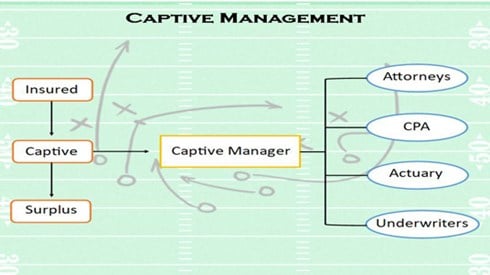What Is a Protected or Segregated Cell Captive?

June 07, 2024

A captive insurer is an insurance company that is wholly owned and controlled by its insureds; its primary purpose is to insure the risks of its owners, and its insureds benefit from the captive insurer's underwriting profits.
Captive insurers fall into two main groups.
- Pure captives. Captive insurers that are 100 percent owned, directly or indirectly, by their insureds
- Sponsored captives. Captives owned and controlled by parties unrelated to the insured
A sponsored captive is not formed by its insureds—known as participants, and a sponsored captive does not necessarily pool its insureds' risks. Many sponsored captives do not require insureds to pay in capital but simply to pay an access fee. These are sometimes referred to as "rental captives."
Rental Captives
A rental captive is a captive insurance company that can be used or "rented" by unrelated insureds. It allows insureds to gain the benefits of a captive insurance arrangement without actually participating in the captive insurance company's ownership or management.
The sponsor contributes the captive's statutory capital (sometimes called "core capital"). Generally, the sponsors that own a rental captive do not take on much risk. They are only charging a fee for the use of their capital and for organizing and operating the captive.
Rental captives can be structured to allow risk sharing among the participants or with no risk sharing at all. Where there is no risk sharing, participation in a rental captive facility can be similar to purchasing insurance from a commercial insurer.
Any number of different organizations can form a captive and then rent it out to others. For example:
- An insurance company may establish a captive and then make it available to renters. The renter would most likely be required to use that insurer's services with regard to policy issuance, safety and loss control, and claims administration.
- A reinsurance company may make its captive available to renters, and the renters would probably be required to purchase reinsurance from that company as well.
- A large insurance broker may have a captive available to rent if the insured arranges coverage through that broker.
- An independent rental captive may be established that allows a renter to structure its program using a broker, insurer, reinsurer, or other service provider of its own choice.
Rental captives appeal to some insureds that are too small to form their own single-parent captives but do not want the governance responsibilities inherent in the use of a group captive.
Advantages of Rental Captives
Depending on the individual circumstances, rental captives can offer a number of benefits.
- No commitment of funds for capitalization
- Reduced administrative costs as compared to owned captives
- Avoidance of captive-related legal problems
- Flexibility
- Underwriting profit and investment income
- Programs that are loss sensitive
- Less restrictive exit provisions
- Claim reserves kept off balance sheet
Disadvantages of Rental Captives
Rental captives can be viable risk financing vehicles, but some specific disadvantages should be considered.
- Tax deductibility of premiums not certain
- Expenses can be higher than some competing conventional risk funding programs
- Insureds may have no control over governance, coverages, and limits
- Reduced cash flow when compared to some conventional risk funding programs
- Many require payment of full annual premium and a form of security (letter of credit)
- Profit contingency returned to renters may be subject to fee deductions by the owners
- Not allowed in every captive insurance domicile
- Risk of the capital provider backing out
Protected Cell Captive Insurers
Rather than pool its insureds' risks, a rental captive may keep a separate underwriting account for each insured participant. In some domiciles, these accounts are legally separated or protected, and the term "cell captive" or "protected cell company (PCC)" is used, indicating that each insured's assets are kept in its own walled-off cell. The assets in one participant's account may not be used to pay liabilities in another unless the respective participants have entered into an agreement to do so.
PCCs are essentially rental captives with a special provision that legally separates the assets and liabilities in each insured's account or "cell" from those of every other participant's "cell." The structure is essentially the same as that for a rental captive with no risk sharing, but PCCs have the additional benefit of statutory protection. PCCs actually guarantee that each cell within the company will be shielded not only from sharing capital and surplus with other cell owners but also from any legal action brought against another participant. Even in the event of a cell liquidation, there is no legal recourse against any other cell in the company.
PCCs can only be formed within the purview of specific domicile legislation or with individual permission of the domicile authorities. For example, prior to issuing specific PCC legislation, Bermuda allowed for the formation of PCCs through a special permission process that required an act of Parliament. Now several domiciles, in addition to Bermuda, have passed PCC legislation. Guernsey was the first in 1997, followed by Cayman in 1998 and Vermont, Rhode Island, and Illinois in 1999. South Carolina and others have also passed PCC legislation.
In different domiciles, slightly differently terminology is used. Bermuda uses the term "segregated account companies," and the Cayman Islands call them "segregated portfolio companies." Some domiciles without specific PCC legislation allow similar structures referred to as "sponsored captives." They each provide the same core benefit: separation of accounts within a single captive insurance company for protection from other captive participants' creditors.
This article is based on information in Risk Financing , section IV.
June 07, 2024






